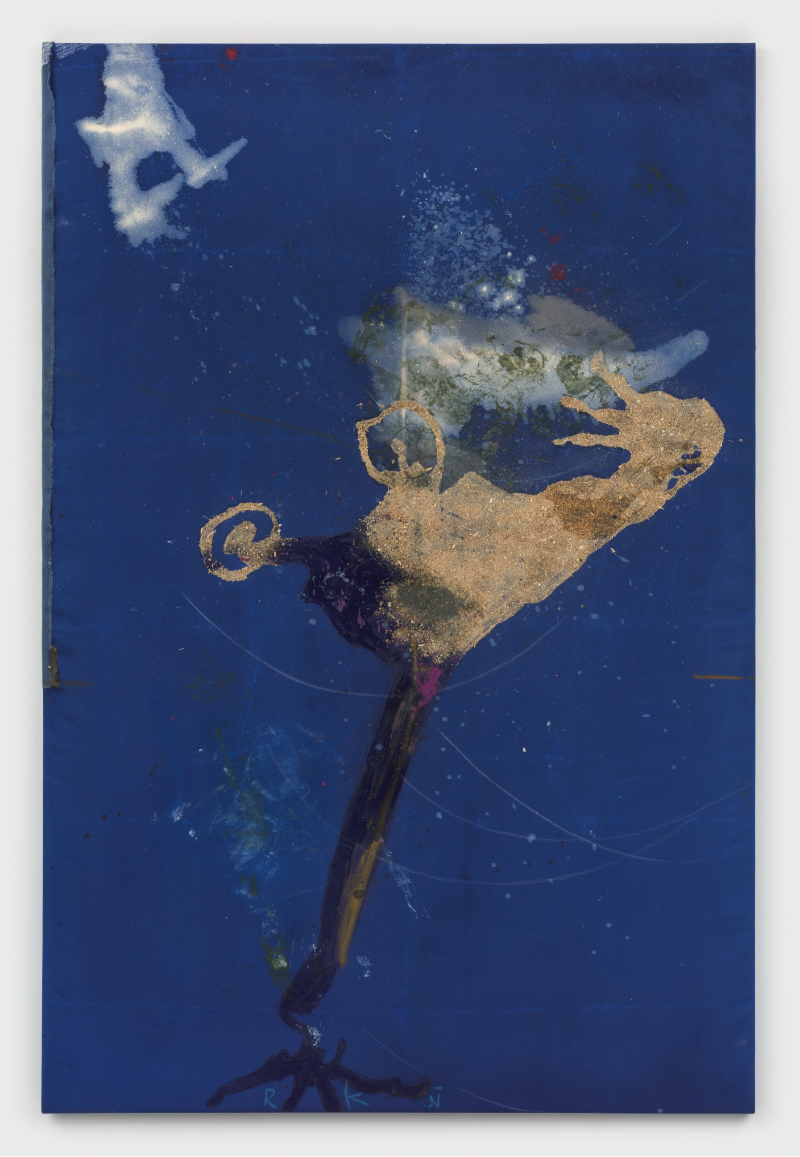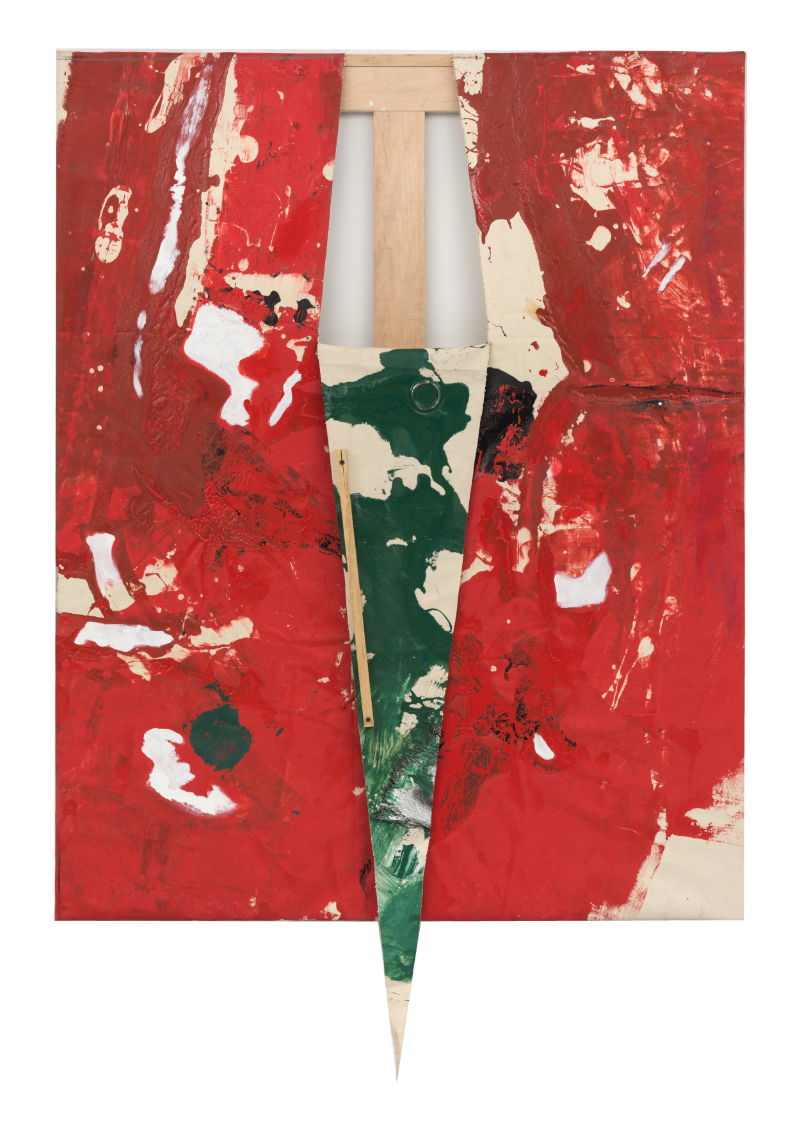From an ultramarine field, a glyph emerges. It is the shape of something, human or animal, and it appears to pirouette in the center of the canvas. Drawing closer reveals other marks scratched into the surface of the blue, or small fragments embedded in the field. One slowly becomes aware that these perturbations are either substances added to the waxed canvas or etched into the color’s surface. The entire scene is rendered through a viewer’s active re-creation of the process through which it was created. Minute details are revealed in the larger overall painting, informing us of the need to move back and forth between further away and closer up.
The work in Rosy Keyser’s exhibition entitled “ARP 273”(named after a of pair of interacting galaxies in the constellation Andromeda, 300 million light years away) is mostly compelling. In the vigorously titled Roughshodder (2021), the work described above, the interactions are conveyed to the viewer almost viscerally. It has a forceful tension, both visual and material, and delivers to the viewer a virtual schematic of the artist’s process and labor. Her contemporary methods follow the older traditions of process art, where the physicality, procedure and materials are the substance of the art itself—her paint, cast corrugated panels, steel, horsehair and sawdust are the substance and the subject. Additionally, the process of making the work is governed by the notion that everything begins and stops when and where it occurs, not by excessively or overtly composing elements within the work. The success of a process work depends on the believability of these parameters.

Rosy Keyser, Roughshodder, 2021. Courtesy of parrasch heijnen, Los Angeles.
The exhibition’s most successful works are the most restrained and nearly monochromatic. In Window Swap (2020) the combination of oil,enamel and paper coalesce into an image of an unfurling. In its suspended field of whites, off-whites and grays, there is a larval-like shape set near the center of the canvas that reveals a mane of hair creeping out around the side and top, and the imagination strains to envision something occurring just out of reach.
In Earliest Camouflage (2021) a triangular slice of canvas—painted on both sides—falls forward to reveal the wooden cross-brace that supports the work’s slashed surface as well as the structural and commercial reality of the gallery wall behind it.Yet it is so heavily reiterated by the complementary colors from the front and back of the canvas that it overstates its portent, becoming a theatrical and didactic exercise.
Overall, Rosy Keyser’s yeomanly material wrangling is evident in the body of work and communicates the power of her rough-and-tumble art-making process to the viewer’s intuitive grasp.


